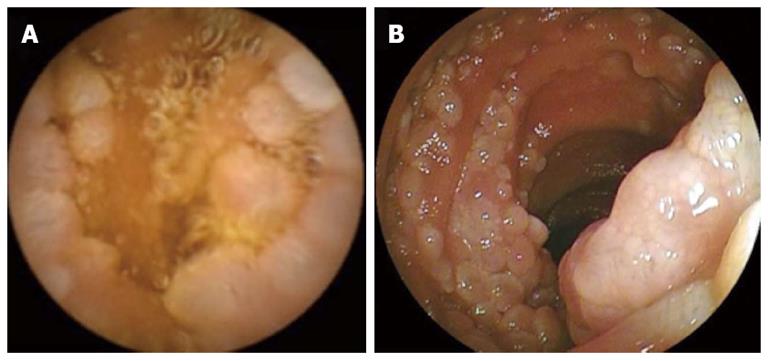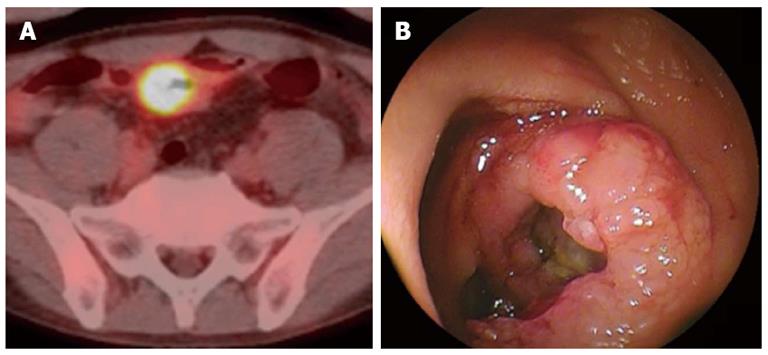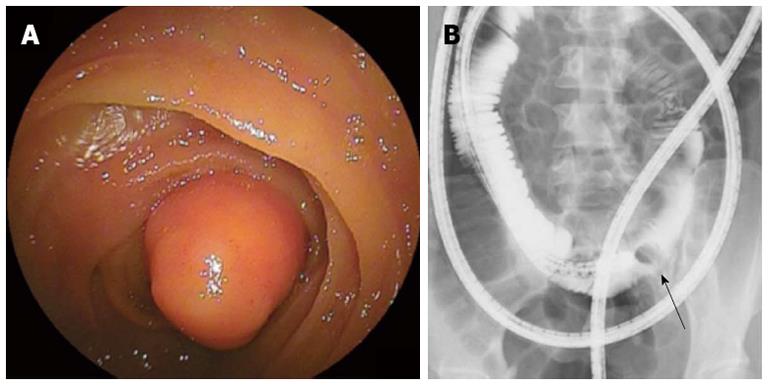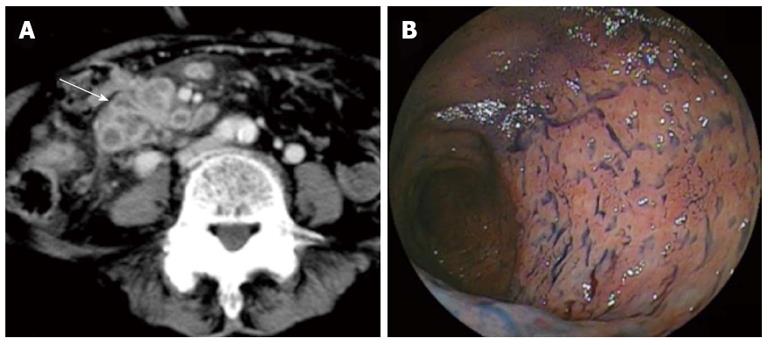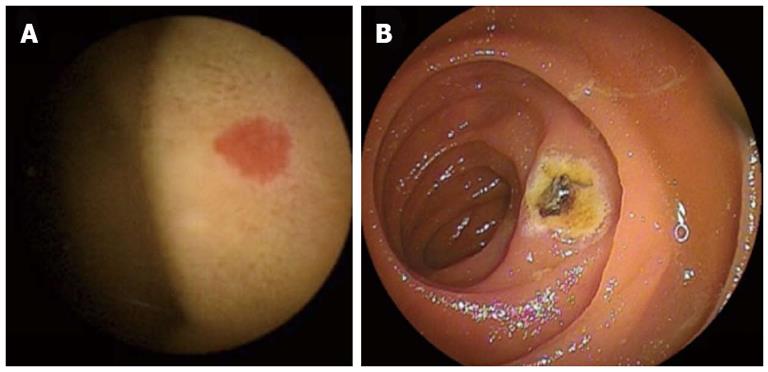Copyright
©2013 Baishideng Publishing Group Co.
World J Gastroenterol. Jan 14, 2013; 19(2): 161-164
Published online Jan 14, 2013. doi: 10.3748/wjg.v19.i2.161
Published online Jan 14, 2013. doi: 10.3748/wjg.v19.i2.161
Figure 1 Endoscopy.
Images obtained using capsule endoscopy (A) and double-balloon enteroscopy (B) in a 61-year-old man with follicular lymphoma who visited us because of gastrointestinal bleeding from an unknown cause and a hemoglobin concentration of 9.7 g/dL.
Figure 2 A mass positive by positron emission computed tomography actually was a tumor arising the mucosa of the small intestine of a 48-year-old woman who had suffered Crohn disease.
A: Positron emission computed tomography/computed tomography showed an accumulation in site of wall thickening of ileum; B: Image obtained by double-balloon enteroscopy.
Figure 3 Identification of lipoma clarified the reason of intermittent abdominal discomfort in a 29-year-old female.
Endoscopic finding (A) and selective small bowel series (B) obtained using double-balloon enteroscopy. This required surgical intervention. An arrow in the B indicates a defect by a lipoma.
Figure 4 Intestinal tuberculosis is also revealed by double-ballon enteroscopy.
A: Computed tomography showed wall thickening of the ileum with contrast enhancement (arrow); B: Double-balloon enteroscopy showed destruction of the small intestinal villi.
Figure 5 Angioectasia.
A: Diagnosis of angioectasia was made by capsule endoscopy; B: Argon plasma coagulation successfully treated the lesion.
- Citation: Sugimura H, Osawa S. Internal frontier: The pathophysiology of the small intestine. World J Gastroenterol 2013; 19(2): 161-164
- URL: https://www.wjgnet.com/1007-9327/full/v19/i2/161.htm
- DOI: https://dx.doi.org/10.3748/wjg.v19.i2.161









